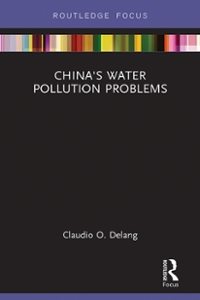Answer all questions its complete.... make sure you answer all parts. its a complete question
18.1 - Suppose that the tradeoff between unemployment and inflation is determined by the Phillips curve: 1 = - a(n - En) where u denotes the unemployment rate, a" the natural rate of unemployment, a the rate of inflation, and En the expected rate of inflation. In addition, suppose that the Left Part al ways follows a policy of high money growth and the Right Party always follows a policy of low money growth. What "political business cycle" pattern of inflation and unemployment would you predict under the following conditions? a. Every four years, one of the parties takes control based on a random flip of a coin (hint: what will expected inflation be prior to the election?) b. The two parties take turns. c. Do your answers above support the conclusion that monetary policy should be set by an independent central bank? 18.3 a, b, c - A central bank has decided to adopt inflation targeting and is now debating whether to target 5 percent inflation or zero inflation. The economy is described by the following Phillips curve: 1 = 5 - 0.5 (1 - En) where u and a are the unemployment rate and inflation rate measure in percentage points. The social cost of unemployment and inflation is described by the following loss function: L = 1 + 0.0512 The central bank would like loss to be as small as possible. a. If the central bank commits to target 5 percent inflation, what is expected inflation? If the central bank follows through, what is the unemployment rate? What is the loss from inflation and unemployment? b. If the central bank commits to target zero inflation, what is expected inflation? If the central bank follows through, what is the unemployment rate? What is the loss from inflation and unemployment? c. Based on your answers to parts (a) and (b), which inflation target would you recommend ? Why?Ch 19 Onestions for Review 4. 5. 19-4 04R - According to the traditional view of government debt, how does a debt-financed tax cut affect public saving private saving, and national saving? 19.5 04R - According to the Ricardian view of government debt, how does a debt-financed tax cut affect public saving private saving, and national saving? Ch 19 Problems & Applications 3, 4 19.3 - The Social Security system levies a tax on workers and pays benefits to the elderly. Suppose that Congress increases both the tax and the benefits. For simplicity, assume that Congress announces that the increases will last for only one year. a. How do you suppose this change would affect the economy? (Hint: think about the marginal propensities to consumer of the you and the old) b. Does your answer depend on whether generations are altruistically linked? 194 - Some economists have proposed the rule that the cyclically adjusted budget deficit always be balanced. Compare this proposal to a strict balanced-budget rule. Which is preferable? What problems do you see with the rule requiring a balanced cyclically adjusted budget?Problems 1. A monopoly faces a market demand curve given by P = 42 Q. Its marginal cost cmve is given by MC: Q. wrongs-s What 1s the equation for the marginal revenue? Show this on a graph. Find the profitmaximizing level of production for this monopolist. What price will the monopolist charge? TWhat price and quantity would be socially optimal? What is this monopolist' s total revenue? Graph the producer surplus, the consumer surplus, and the deadweight loss for the market with the monopolist. 2. True or False: A monopolist can always make a positive profit. '3. True or False: A firm in perfectly competitive market will always earn zero economic profit. 4. Suppose a monopolistic local utility company faces a demand curve given by P = 120 4Q. Total cost for this firm is given by TC = 400 + 4Q, and MC is fixed at $4 per unit. a. . TWhat is the fixed cost? Does this indicate high barriers to entry? b c. d. e f. Does the technology of a firm represent economies of scale? What is the socially optimal level of production and price? Suppose this industry operates as a monopoly. Find the equilibrium price and quantity. The government, bowing to public pressure to regulate monopolies, decides to irce rms to charge their marginal cost just like they would in perfect competition. How much will the monopolist produce? What is the profit for this monopolist? Suppose the government instead chooses to force the monopolist to charge a price equal to their average total cost, this monopolist will supply 25 units. What will be their profits











